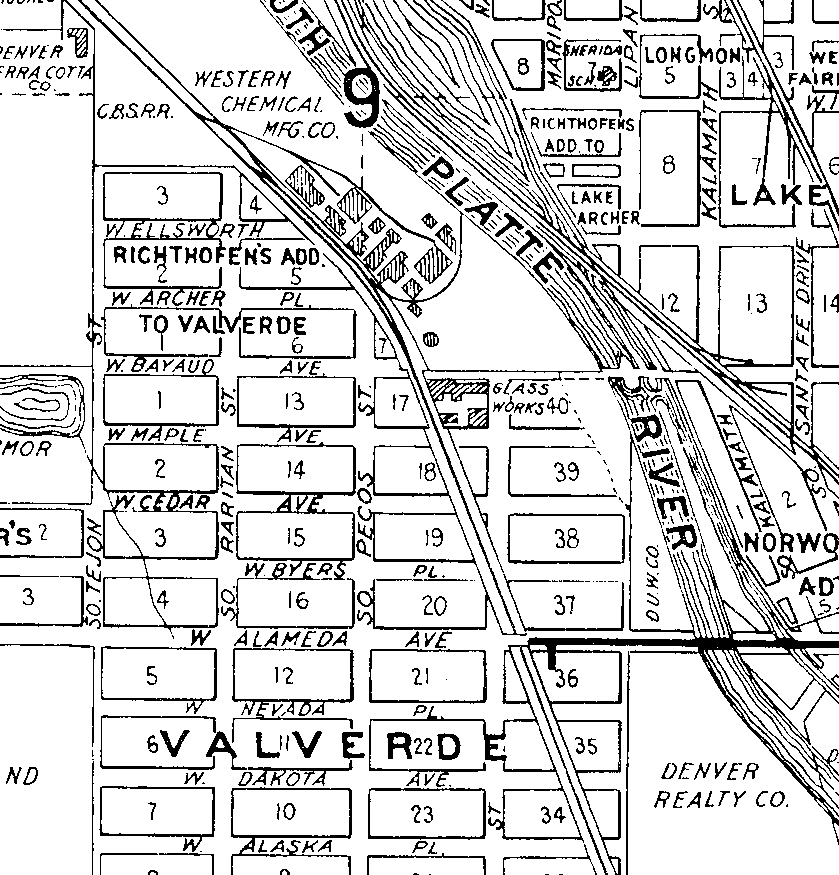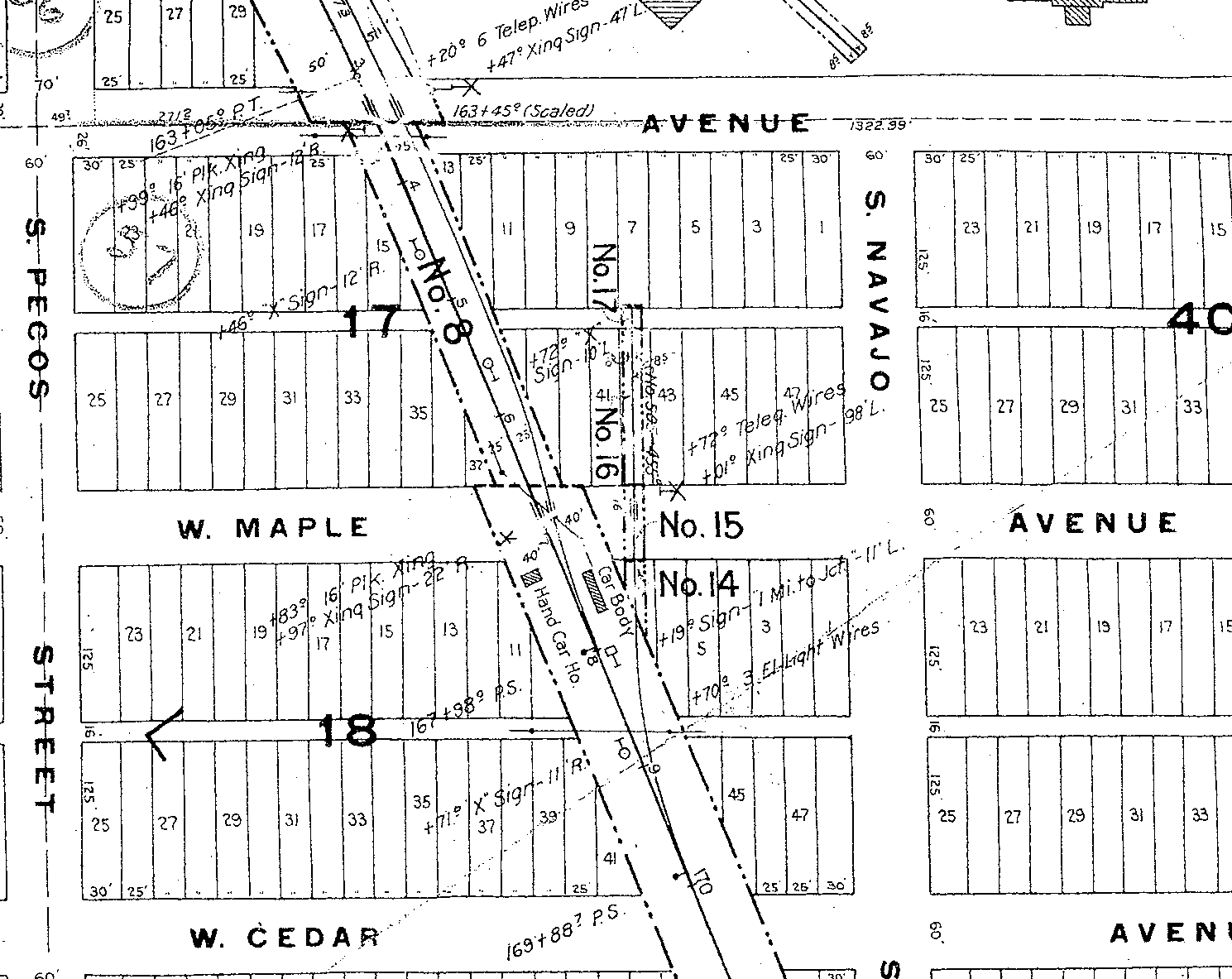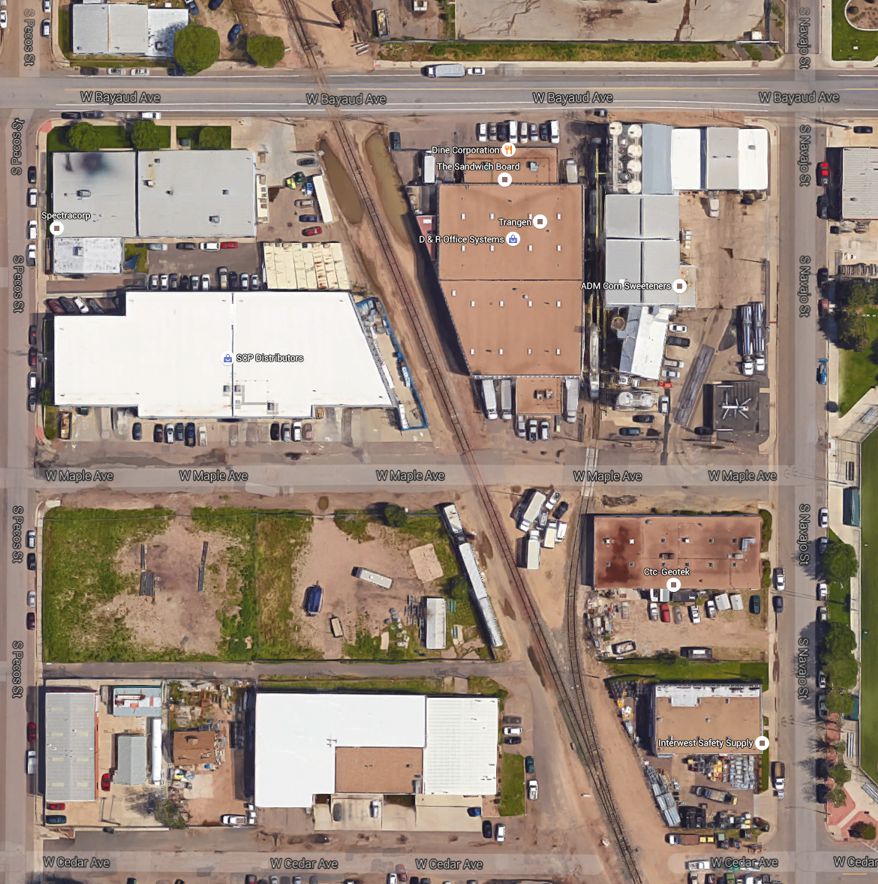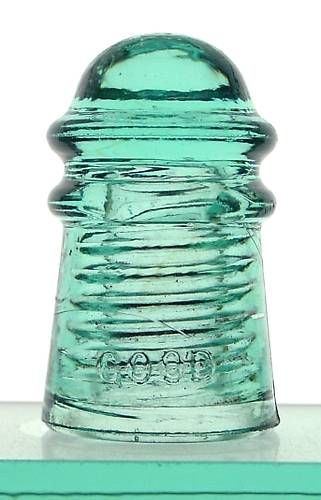Valverde Glass Works
12
12
|
Robert Good operated a glass factory in Valverde, starting in 1897. The plant was served by a spur off the old South Park line. The plant was operated as Western Flint Glass Co. from 1899 to 1901, and Western Glass Mfg. Co. from 1901 to 1909. These guys used 100's of tons of silica sand to make glass.
Surprisingly, I have never seen a photo of this part of C&S operations, the spur, or the factory. Given the close-in location, and the known volume of traffic they generated, it seems old Otto or Dick (or others) would have documented switching or even train movements along this stretch of track. Anyone know of any photos of this spur ?
"Duty above all else except Honor"
|
|
Not much in the papers aside from a disastrous fire in 1906:
 Colorado Republican, May 10, 1906  Record-Journal (Douglas County), Oct 9, 1908 "Western Flint Glass", "Valverde Glass" and "Robert Good" all came up empty. Cheers, Jeff. |
|
Yeah, ... that's on par with all searches I have done. Considering the size of the operation, I would think someone would have taken a few photographs over the coarse of 12 years, you know ?

"Duty above all else except Honor"
|
|
In reply to this post by South Park
According to a 1899 Denver business directory, There was a Valverde Glass Works on the SE corner of 8th ave and Maple in Denver which places it about at first base in the baseball field in Valverde Park I work just a few blocks from there. I suspect there is not much left of the glassworks at this point. But there are tracks there that would be the old South Park ROW.
Don Peterson |
|
In reply to this post by South Park
This re-print of Beller's Official Map of City and County of Denver from 1913 shows the glass works just south of Bayaud and east of the tracks, but no spur (details on the spurs and sidings don't seem to be complete).
 The 1918 ICC Valuation map shows nothing there, but does show a spur from the south (branching off just north of Cedar) into where the 1913 map shows the glass works.  This 1929 track diagram shows the chemical plant just north of there, but doesn't show the glass works. This also shows that the standard gauge ran past here, continuing to just south of the Griffin Wheel Works.  There is still a spur there. 
|
|
Remember, it was 1897-1909 that the glass works was operating. Good intel, but wrong years of operation. Pre-railfan photos, like those of Otto Perry and Richard Kindig are so random and like the Garos-to-Buena Vista section of the road, very overlooked by period photographers.

"Duty above all else except Honor"
|
I'm aware that these are a little later than the time period you gave for operation of the glass works, but I posted these because the first map shows the location of the glass works, even if it may have been closed for a few years, while the others show what may have been the spur, and the track map shows that the standard gauge reached that far. Unfortunately, none of the maps seem to show the gauge of the spur. Note that the period of operation was a bit early for Perry (born in 1894 and thus only 15 years old at the end of the glass works operation) or Kindig (born in 1916 - seven years after it stopped) to have photographed. |
|
In reply to this post by South Park
I found this Article on the Western Glass Mfg. Company. Interesting article and there is a map towards the bottom of the page that shows the location of the spur. So do we think this was most likely served by standard gauge?
http://www.cjow.com/archive/article.php?month=6&a=06The%20Western%20Glass%20Manufacturing%20Co.htm&year=2005 Don Peterson |
|
In reply to this post by South Park
Tom, I recall Tom Jensen (?) expressing similar frustration when he was preparing his book on Northern Colorado railroads in the 70s. When he asked Kindig and Haley if they had any photos of operations in LaSalle (and Greeley), they gave him a quizzical look and shared, "Why stop at LaSalle when you could drive another 90 minutes and see the main line in Cheyenne?"
I am sad now that I never met any of these fellows, though I was surely in the vicinity multiple times during Rocky trips in the 60s and 70s. They all had their favorite haunts, but what they shot seems dependent on time, weather and operations.
Keith Hayes
Leadville in Sn3 |
|
In reply to this post by Todd Hackett
...and no one has mentioned the Griffen Denver Wheel Works. I believe this building still exists, just south of West Evans Avenue. You can identify it by the tall brick smokestack. It still appears to be used as a warehouse.
Keith Hayes
Leadville in Sn3 |
The tall brick smokestack with COBUSCO (COlorado BUilders Supply COmpany) is across the tracks from the Griffen plant site. The 1913 Beeler's map shows this to be "Old Cotton Mills" while the 1918 ICC map shows it as the "Overland Cotton Mill." See this document for details on that building. The Griffin Wheel Co was on the west side of the tracks, just south of Evans. The 1913 maps labels it "Griffin Wheel Co" while the 1918 ICC map labels it "Bay State Car Wheel Co." The buildings there now look to be newer. |
|
In reply to this post by Don Peterson
Ha! That article Don posted brings us back to rural electrification and telegraph vs. telephone lines!
(I didn’t realize we were talking about that kind of glass.  ) )
Cheers, Jeff. |
|
95% of all glass insulator production was done back east. Denver has the unique history of being part of that rare western production history, AND it fell right there along the most wonderful of all American railroads ... the old South Park ! So, lots of gondolas of sand in, lots of boxcars of finished goods going out. I'm not into modeling, but if I were, sounds like a good subject to be modeled, especially if the modeler likes to do switching ops. Whaddya think, drops off the Morrison mixed ? Special runs to the local industries south of town ?
If anyone hasn't figured it out, I am a devoted study of early telephone history and line construction in general.  Robert Good's "pony" style offering for light telephone distro.  Reworked Good molds were used to make insulators for Good's successor company, W.F.G. CO.. Most of this style were found in an aqua similar to the Good above.  W.F.G. CO. used a lot of manganese as a decolorizing agent, producing a wide range of purple/amethyst colors when exposed to the sun's UV rays. This WFG power piece saw service on the turntable lead at the D&RG's Alamosa roundhouse.  Western Glass Mfg. Co. took over operations from 1901 to 1909. The crude products of their predecessor operators were refined and the WGM-marked pieces show a typically higher quality of finish. ALL WGM pieces were made of "flint glass", decolorized with manganese and later turning some shade of sun-colored amethyst, depending on the chemical balance of iron oxides in the glass and the amount of manganese used in the glass batch. A common misconception of this process is that the color is based on length of sun exposure. Most glass would find its chemical balance when placed in a sun exposed location within a year. Further exposure would bring no further change in color.
"Duty above all else except Honor"
|
|
Another article from that same site mentioned that they made insulators specifically for the D&RG. Interesting that Silica came in via the C&S, insulators out and shipped to the D&RG. They were also manufacturers of bottles for breweries (Zangs?) and specifically pickle jars for the Kuner company. I just picked up some Kuners kidney beans for a batch of chili. Wish I had a bottle of Zangs to go with it. Ah how we can come full circle!
Don Peterson |
|
In reply to this post by Todd Hackett
CONTENTS DELETED
The author has deleted this message.
|
|
I have hunted much of the old NG D&RG system and never found "Denver" glass on the telegraph. I wonder what that article cites as being made specifically for the D&RG (or if it was even stated ?) ??? I suspect it was not a huge, continuous buying contract. The D&RG was a big fan of Brookfield glass since the beginning.
 
"Duty above all else except Honor"
|
|
Here is a link to the article and the specific quote below. He thanks a "Denver Glass authority" Mike Miller for the info. Great picture BTW!
"Finally, we come to the highest numbered WGM CD, the 162. The CD 162 was used for signaling purposes on the Denver and Rio Grande Railroad, and also for light power applications in many of the western towns. As it turns out, the bases of the WGM CD 162s are relatively fragile; a large fraction of specimens have considerable base damage. In fact, to find a WGM signal in so-called "mint" condition is most unusual!" http://www.cjow.com/archive/article.php?month=6&a=06The%20Western%20Glass%20Manufacturing%20Company.htm&year=2001 Don Peterson |
|
Ahh… that might explain it. “Signally purposes” sounds like SG D&RGW. (They never did any signalling on the NG did they?)
Cheers, Jeff. |
|
BTW, anyone know where WGM (and WFG before them) got their silica from? (It wasn't, perhaps, Silica, was it?)
Cheers, Jeff. |
|
This may have some interest, but not on the C&S lines.
Pandora, end of Telluride Branch RGS. http://digital.denverlibrary.org/cdm/fullbrowser/collection/p15330coll21/id/7194/rv/singleitem/rec/15 
UpSideDownC
in New Zealand |
«
Return to C&Sng Discussion Forum
|
1 view|%1 views
| Free forum by Nabble | Edit this page |

